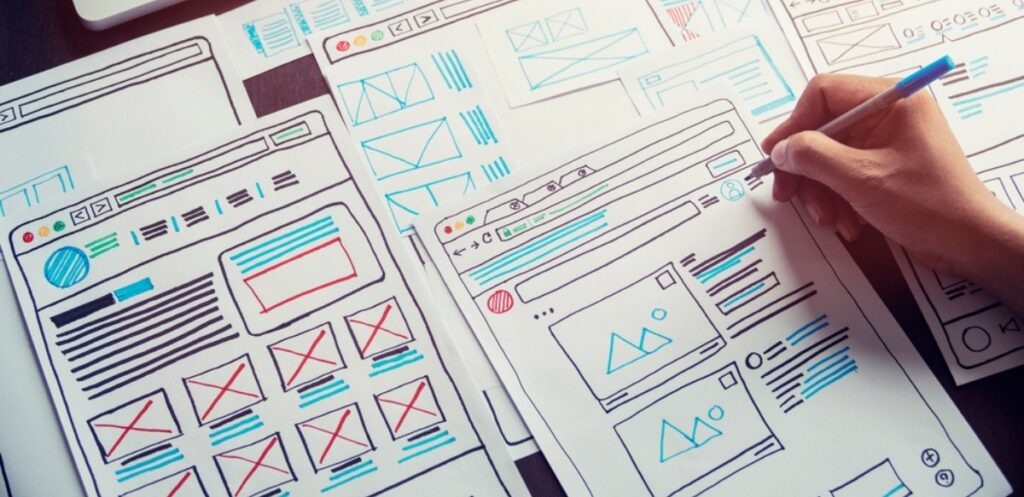
User-Centered Design: How to Create Apps People Love to Use
By Udit Agarwal

In app development, one principle stands out as paramount: user-centered design (UCD). This approach focuses on creating apps prioritizing the end user’s needs, preferences, and behaviors. The goal is simple yet profound—design apps people use and love. In this guide, we will delve into the intricacies of user-centered design and offer valuable insights on creating user-friendly and engaging apps.
Understanding User-Centered Design (UCD)
User-centered design revolves around the end-user’s needs and preferences at every stage of the development process. It ensures that the final product is intuitive and efficient and, most importantly, caters to the users’ requirements. UCD comprises several vital principles and methods that shape the app development process:
1. User Research:
Extensive user research is essential before diving into design. It includes surveys, interviews, and observations to gather insights into the target audience’s behaviors, pain points, and expectations.
2. Persona Development:
Creating user personas helps to visualize and humanize your target audience. Each persona represents a unique user segment with distinct goals, needs, and characteristics.
3. Iterative Design:
UCD promotes an iterative approach, with design, testing, and revision cycles prioritizing continuous feedback and improvement. This approach allows for adaptability and ensures that the final product aligns with user preferences.
4. Prototyping:
Building prototypes allows developers to test the app’s usability and features before investing heavily in development. This approach helps to identify and resolve issues early in the process.
5. Accessibility:
UCD emphasizes creating apps that are accessible to all users, including those with disabilities. It involves implementing features like screen readers, alt text, and keyboard navigation.
6. Usability Testing:
Usability testing is a critical component of UCD. It involves observing users interacting with the app, collecting feedback, and making adjustments based on their experiences.
7. Content Strategy:
Effective content strategy ensures that information is clear, concise, and user-friendly. Content should guide users seamlessly through the app’s features.
8. Visual Design:
The visual design should be aesthetically pleasing and aligned with the app’s purpose while considering the psychological aspects of color, typography, and layout.

Creating User-Centered Apps
Now, let’s explore how to apply these principles in creating apps people love to use:
1. Start with Research:
The foundation of any UCD approach is thorough user research. Dive deep into your target audience’s needs, preferences, and pain points. Understand what they want and expect from your app.
2. User Personas:
Develop detailed user personas that represent your various user segments. Each persona should encapsulate that group’s critical traits, goals, and challenges.
3. Iterate and Prototype:
Create prototypes and conduct usability testing with real users at each design phase. This iterative process allows you to catch and rectify usability issues early.
4. Mobile Optimization:
In today’s mobile-dominated world, ensure your app works well with various screen sizes and orientations. Test its performance on different devices and platforms.
5. Intuitive Navigation:
App navigation should be logical and easy to understand. Use familiar icons and labels to guide users through the app’s features.
6. Visual Appeal:
The visual design should be visually appealing while remaining in sync with your brand identity. Visual elements like images and videos should enhance the user experience.
7. Accessibility:
Ensure your app is accessible to all users, including those with disabilities. Incorporate features that make it navigable for everyone.
8. Content Strategy:
Implement a content strategy that delivers concise, meaningful content that guides users without overwhelming them.
9. Usability Testing:
Regularly conduct usability testing with real users. Their feedback will provide essential insights into the app’s user-friendliness.
10. Data-Driven Decision-Making: –
Use analytics and user feedback to make data-driven decisions. Identify areas where users struggle and make improvements based on this data.
11. A/B Testing: –
Experiment with design elements, features, and layouts using A/B testing. This data-driven approach helps refine the app’s design.
12. Accessibility and Inclusivity: –
Create an app that is accessible and inclusive. It involves providing alternative text for images and keyboard navigation and focusing on user experience for all.
13. Keep It Simple: –
Simplicity is often the key to an intuitive design. Eliminate unnecessary elements and streamline the user journey.
14. Responsive Support: –
Offer responsive customer support within the app to promptly address user queries and concerns.
15. Consistency Across Platforms: –
Ensure a consistent user experience across different platforms (web, mobile, desktop) to maintain brand identity and user familiarity.
In conclusion, user-centered design is a holistic approach that combines extensive research, usability testing, and iterative design to create apps that resonate with users. It prioritizes their needs, preferences, and the overall user experience. By applying these principles and methods, app developers can create apps that fulfill user expectations and elicit genuine user love and loyalty. In the digital age, where user experience is a defining factor, UCD is a strategic imperative for app success.